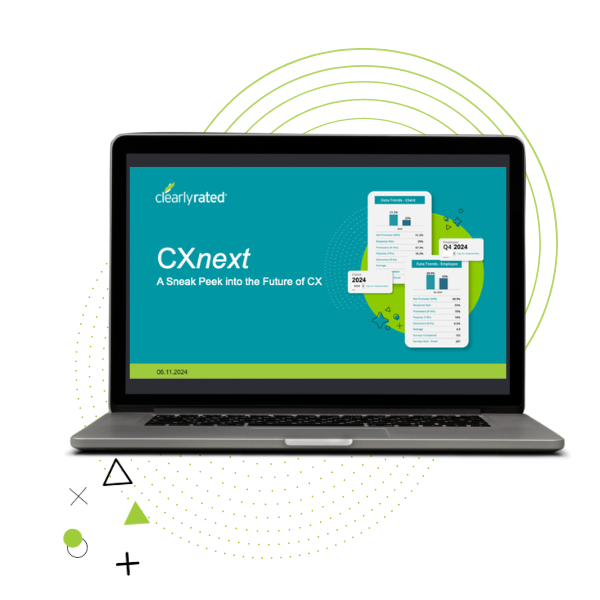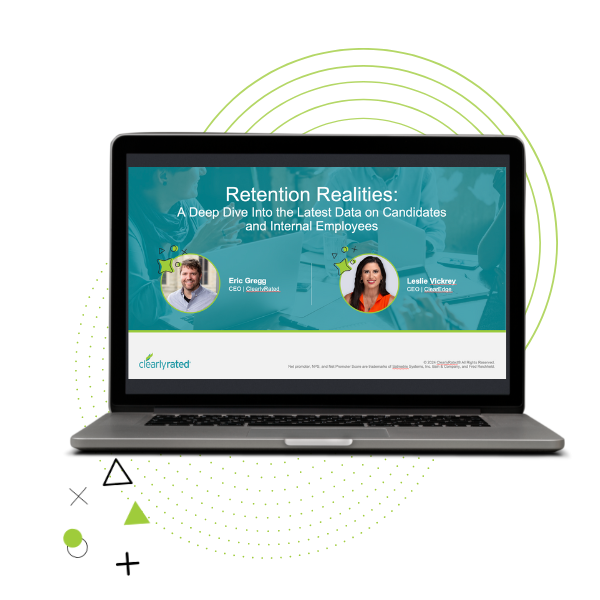Providing a positive customer experience (CX) is a must if you want a successful business, and understanding your position on our CX maturity model can guide you there.
While only a small minority of customers will tell you when they have a service issue, most will complain about it to others. Fair enough—many of us get uncomfortable with confrontation. On the other hand, though, a great CX yields strong benefits. A Gartner report on customer service showed that 86% of customers will spend more money with a company after receiving value-enhanced services and almost all of them (97%) will reciprocate those good vibes by sharing news of their good experience with others.
This shows that by providing a positive CX, you can improve your company’s bottom line. In fact, we have compelling proof that CX-driven accounting firms grow at a faster rate than their peers.
But what does a good CX really look like, and how do you build one?

The Stages of CX Maturity
To answer the above question, we’ll start by covering the five stages of CX maturity.
Stage 0 – Your CX knowledge is anecdotal
Your organization doesn’t have a standard, reliable way to measure and track the quality of your CX across the board. You don’t know your Net Promoter® Score (NPS®), and you lack related insights.
Impact: At this stage, your CX is unknown. You cannot, therefore, improve it or capitalize on it.
Stage 1 – You have a CX report card
You measure CX metrics like NPS and can use industry benchmarks to compare your CX to your peers. While you can use point-in-time insights to identify at-risk accounts, you don’t have ongoing reporting to learn what’s going well or where you’re failing.
Impact: When you can get meaningful reports, you improve your visibility into your CX and can begin to manage your online reputation.
Stage 2 – You’ve operationalized your CX reporting
If you use NPS surveys as a way to measure your CX, you get decent response rates and have a process for following up on customer feedback. Your team is proficient not only at measuring and reporting on CX, but also using those insights to take action. You use CX feedback reports to:
- Connect with at-risk accounts and save the relationship before they churn.
- Identify areas for improvement and create action plans that raise your future NPS.
- Gather positive feedback to support your marketing and sales efforts.
Impact: You have the knowledge and power to improve your NPS, retention numbers, and online reputation.
Stage 3 – You have a CX-centric firm culture
By measuring, tracking, and reporting on CX metrics like NPS, you have clear proof of a positive CX. You also use validated customer feedback to guide business decisions, prioritizing your product and service roadmaps in ways that matter most to your customers. CX excellence is now integral to your brand story.
Impact: Your NPS stays above industry standards, improving both customer and talent retention. You use CX insights to improve marketing materials, expand current customer accounts and boost new client acquisition (often thanks to referrals from happy customers), all of which help grow your firm’s revenue and gross margin.
Stage 4 – Your firm is CX driven
Your firm could serve as the best practice model for your industry. Not only do you regularly gather customer feedback to track CX metrics, but you also have processes for responding to customer feedback both at the micro level (i.e. individual customers) and the macro level (i.e. using trending insights to improve your overall CX). Your team consistently delivers remarkable experiences, and many of your customers act as brand ambassadors, singing your praise to potential customers.
Impact: In addition to the benefits from Stage 3, you have a team of productive professionals who take pride in providing great customer service.

5 Tips for advancing your CX maturity
We’ve spent two decades working with hundreds of firms across various industries to track and improve their CX, so we’ve seen what works best. Firms that consistently provide the best CX do the following:
- They have an established process for collecting data from their clients (and often their own talent!). They then use these insights to predict and prevent churn while making firm-wide CX (and EX) improvements.
- They automate their survey process with strategic integrations. Our clients have integrated Clearlyrated’s survey platform with Salesforce, Bullhorn, erecruit, Microsoft Dynamics, and Avionté. (Our Hubspot integration is coming soon!)
- They involve their workforce. Top CX firms make sure their client-facing teams understand and actively support their CX measurement efforts. They route feedback to appropriate customer-facing team members while also celebrating CX shout-outs internally. Doing so boosts morale—and by rewarding CX excellence, they nurture a CX-focused culture.
- They create processes for responding to and acting on survey insights. CX-driven firms don’t just survey their customers, they respond to the feedback. This shows customers that they care about their experience, building trust and fostering long-term relationships.
- They’re proactive about using customer engagement to discover up-selling and cross-selling opportunities. ClearlyRated can help you customize your surveys to effectively capture new business opportunities from existing customers.
If you would like to deepen your understanding of your firm’s CX and identify ways to make meaningful improvements and grow your CX maturity, learn more about client satisfaction surveys.




